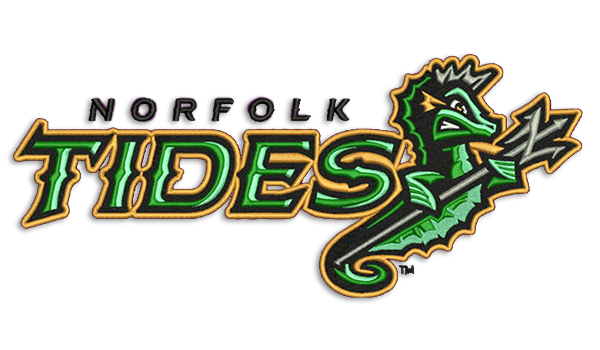Ideal Digitizing for Embroidery: Boost Your Tasks
Ideal Digitizing for Embroidery: Boost Your Tasks
Blog Article
Grasping the Needlework Digitizing Refine: Your Ultimate Guide
Needlework digitizing is a meticulous craft that needs accuracy and knowledge to convert intricate styles right into digital styles for equipment embroidery. As artisans begin on this trip to master the embroidery digitizing process, a thorough understanding of the basics sets the foundation for excellence. Beyond the simple understanding exists a world of innovative software, specialized tools, and nuanced methods waiting to be checked out. By diving right into the subtleties of digitizing, one can open a globe of imaginative opportunities and boost their needlework projects to new heights.

Recognizing Needlework Digitizing Basics
Embroidery digitizing basics form the foundation upon which intricate designs are translated into machine-readable formats for precise stitching. This initial step in the embroidery digitizing procedure is crucial for ensuring that the final stitched product is a loyal depiction of the original style. Understanding embroidery digitizing basics entails realizing vital ideas such as stitch types, stitch direction, thickness, padding, and draw payment.
Stitch kinds play an essential duty in figuring out the visual and textural outcome of the stitched layout. By picking the proper stitch type, whether it be satin, fill, or running stitch, digitizers can achieve the wanted impact and enhance the total top quality of the embroidery. Additionally, sew instructions influences the flow and measurement of the style, while thickness figures out the spacing and insurance coverage of the stitches.
Moreover, padding sewing supplies stability to the design by securing the textile and protecting against distortion during the needlework process. Draw payment is another crucial consideration to counteract the all-natural tendency of material to contract when sewn. Mastering these embroidery digitizing fundamentals is fundamental for producing professional-quality embroidered items.
Selecting the Right Digitizing Software Program
Selecting the proper digitizing software program is a vital choice that considerably affects the performance and top quality of the needlework digitizing process. Digitizing for Embroidery. When picking the best digitizing software program, it is vital to take into consideration variables such as the complexity of designs you prepare to produce, the user-friendliness of the software application, the degree of consumer assistance used, and the compatibility with your needlework equipment
There are various digitizing software options available out there, varying from fundamental programs for novices to sophisticated software application for specialist digitizers. Some preferred options consist of Wilcom EmbroideryStudio, Hatch Embroidery Software, and PulseID. These software provide a vast array of tools and features to help you create intricate designs effortlessly.
Prior to deciding, it is recommended to explore the different software alternatives via complimentary trials or demos to determine which one ideal matches your requirements. Furthermore, reading reviews and looking for recommendations from experienced digitizers can give beneficial insights into the toughness and weak points of each software (Digitizing for Embroidery). By i was reading this meticulously examining your requirements and contrasting the functions of different digitizing software program, you can make an enlightened option that enhances your needlework digitizing process
Digitizing Tools and Methods

Optimizing Layout Setup for Needlework
Grasping the ins and outs of style settings is essential in achieving optimal cause the needlework digitizing procedure, structure upon the foundation laid by recognizing digitizing devices and techniques. When enhancing style settings for embroidery, it is vital to think about variables such as stitch kind, thickness, rug, pull compensation, and enrollment. Sew type choice impacts the overall feel and look of the style, with alternatives like satin, fill, and running stitches using different appearances and impacts. Density refers to the spacing and thickness of stitches, affecting the design's insurance coverage and sturdiness. Correct rug stitching provides stability and prevents fabric distortion, especially for intricate layouts or on stretchy materials. Pull helpful hints compensation adjusts for textile stretch during stitching, guaranteeing accurate style replication. Enrollment settings straighten different components of the style accurately, keeping overall layout integrity. By fine-tuning these layout settings, embroiderers can boost the quality and accuracy of their embroidered productions.

Troubleshooting Common Digitizing Issues
When coming across typical digitizing concerns during the needlework procedure, it is vital to understand the source and implement efficient services promptly. One typical trouble is stitch thickness problems, where stitches might be too thick, triggering the textile to pucker, or also sporadic, causing spaces in the style. Readjusting the stitch thickness settings in the digitizing software can assist resolve this concern.
An additional regular obstacle is thread breaks throughout the embroidery process. This can happen as a result of various reasons such as incorrect tension setups, plain needles, or making use of low-quality thread. Guaranteeing proper upkeep of the needlework equipment, including regular needle modifications and tension modifications, can reduce the incident of string breaks.
Moreover, style enrollment mistakes can result in misaligned aspects within the needlework style. Examining the design placement in the digitizing software and making required changes prior to sewing can help in preventing this concern. By addressing these common digitizing concerns without delay and effectively, you can ensure a smoother needlework process and top notch completed items.
Final Thought
Finally, understanding the embroidery digitizing process requires a strong understanding of the basics, the best selection of software application, and understanding of tools and methods. Enhancing design setups and repairing typical digitizing issues are essential action in making certain high-grade needlework results. By following these actions vigilantly, one can achieve accuracy and efficiency in the digitizing process.
Report this page